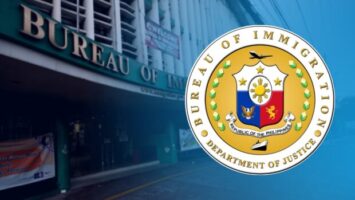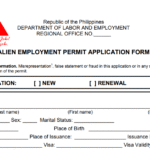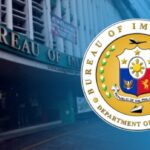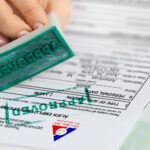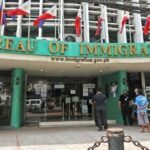Thanks to the historic Executive Order 408 (EO 408), citizens from over 150 countries can enter the country without applying for a visa beforehand. Whether you’re visiting for tourism, business, or family reunions, this visa-free access simplifies travel and encourages more visitors to experience the Philippines’ culture and natural beauty. Foreign nationals may also use EO 408 to remain in the Philippines while processing their visa applications.
What Is Executive Order 408 (EO 408)?
Executive Order 408 was signed by then-President Carlos P. Garcia on November 9, 1960. It established the initial list of countries whose citizens could enter the Philippines visa-free for short stays. The goal was to promote tourism, strengthen diplomatic ties, and make the country more accessible to international travelers.
Over the years, EO 408 has been amended multiple times. For example:
- EO 408-A (1960) expanded the list shortly after passing the original order.
- Subsequent amendments under later administrations updated and added more countries as diplomatic relations strengthened.
- Today, the list covers 157 countries, maintained and updated by the Department of Foreign Affairs (DFA) and the Bureau of Immigration (BI).
How Long Can EO 408 Nationals Stay in the Philippines?
Citizens of EO 408 countries can stay in the Philippines for up to 30 days without securing a visa. This period is generally enough for vacations, short business trips, or family visits. There are, however, some exceptions. For example, thanks to separate bilateral agreements, Brazilian and Israeli nationals enjoy a longer stay of 59 days.
Foreign nationals may also use EO 408 to remain in the Philippines while processing their visa applications. While the 30-day visa-free period is often sufficient for certain visa applications, those applying for long-term visas may need to request extensions or secure a short-term visa first to ensure they have adequate time to complete the process.
It’s important to note that the 30-day count includes your arrival and departure dates. Overstaying may result in fines or penalties, so travelers should plan their trips carefully.
Basic Requirements for Visa-Free Entry
Even if your country is on the EO 408 list, there are basic requirements you need to meet:
- Passport validity: Your passport must be valid for at least six months beyond your intended stay.
- Return or onward ticket: You must show proof of return or onward travel to another destination.
- Purpose of visit: Visa-free entry applies to tourism and business visits only. You need the appropriate visa for employment or long-term residence.
Meeting these requirements ensures smooth entry at Philippine immigration counters.
The Complete List of EO 408 Countries
The EO 408 list covers countries from Asia, Europe, the Americas, Africa, and Oceania. These include:
- Asia-Pacific: Japan, South Korea, Australia, New Zealand, Singapore, Malaysia, Thailand, Indonesia, Vietnam, and more.
- Europe: United Kingdom, France, Germany, Spain, Italy, the Netherlands, Switzerland, and most EU member states.
- Americas: United States, Canada, Mexico, Argentina, Chile, etc.
- Middle East & Africa: South Africa, Turkey, Israel, Saudi Arabia, and the United Arab Emirates.
For the full, updated list, travelers should check the DFA’s Guidelines on the Entry of Temporary Visitors to the Philippines.
Special Cases: Brazil and Israel
While most EO 408 nationals enjoy 30 days visa-free, Brazil and Israel stand out. Citizens of these countries can enter and stay for 59 days without a visa. This arrangement is due to bilateral agreements between the Philippines and the two nations.
How to Extend Your Stay in the Philippines
If 30 days isn’t enough, you can apply for a visa waiver or extension at a Bureau of Immigration (BI) office in the Philippines.
- First extension: An additional 29 days can be granted, bringing the total stay to 59 days.
- Subsequent extensions: Travelers may apply for further extensions in 1–2 month increments, with a maximum cumulative stay of 36 months for most nationals.
Extensions involve paying fees, but the process is straightforward, especially in major cities where BI offices are located.
Staying Longer in the Philippines
For those planning to stay in the Philippines beyond the extension period, there are several options available through the Bureau of Immigration:
- Tourist Visas: Travelers may convert their visa-free stay into a tourist visa, which allows longer stays and can also be extended through the Bureau of Immigration.
- Work Visas: For foreigners employed by Philippine-based companies or organizations.
- Investor’s Visas: These are available to foreign nationals who invest a required amount in the Philippines. They offer residency benefits along with business opportunities.
- Student Visas: For those enrolled in recognized schools, colleges, or universities.
- Special Resident Visas: These include visas for retirees, investors, or spouses of Filipino citizens who allow longer-term residence.
The best option will depend on the purpose of stay and individual circumstances.
Final Thoughts
The Philippines’ visa-free policy under EO 408, first signed in 1960 and expanded several times since, makes it one of the most accessible destinations in Southeast Asia. If you’re planning a trip, ensure your passport is valid, book a return or onward ticket, and confirm your country is on the EO 408 list. With these in place, you can enjoy the Philippines’ hospitality and natural wonders.
Are You Applying for a Visa in the Philippines?
Let Work Visa Philippines guide you through the process. Our experienced lawyers help clients obtain a suitable visa, the proper permits, and other requirements from the appropriate government agencies. We’ll ensure your legal documents are complete so you can focus on enjoying your stay in the Philippines.
Reach out today and we’ll guide you every step of the way.
- Contact Us Here
- Fill Out the Form Below
- Call us at +63 (02) 8540-9623

